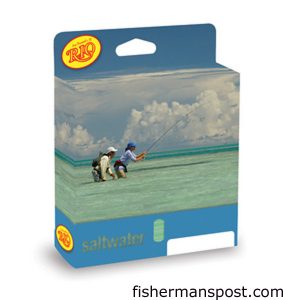Road To Redfish – Fly Lines
You could go into an endless discussion of all the available fly lines for all of the available fly rods to chase all the available species in the myriad conditions and locations, even if we just focused on inshore saltwater fishing in southeastern NC. My approach for this article will be to only talk about specific lines well suited for a specific species, the redfish.
Fly lines are designed with different rod weights, lengths, and actions, as well as different species in mind. A “typical” fly line is in the neighborhood of 90 – 100′ long, but multitudes of intended uses demand multitudes of different fly lines. There are floating lines (the entire line floats and is best for shallow water applications and surface feeding fish), sinking lines (the entire line sinks and is best for heavy current and fish deeper in the water column), intermediate lines (rear body of the line floats and forward body sinks and is best for spookier fish and deeper flats), shooting heads (forward head is an interchangeable system and is best for trips where you experience various conditions), and many variations within each category.
For redfish, the most widely used line would probably be an eight weight, weight forward, floating line (WF8F), and a seven or a nine weight line would come in a close second. There may be specific circumstances where some sort of sinking line—to get your fly down in the water column to some deeper holding fish—would be effective, but in the majority of fly fishing for reds that I do, an eight weight gets the most “time on the field.” It can be used to cast a lighter fly to shallow tailing or cruising fish, as well as for throwing a searching pattern along banks, oyster bars, and deeper flats.
My favorite redfish, bonefish, and all around flats fly line is a Rio Saltwater or Clouser taper. A WF8F consists of 60’ of running line (give or take) which is the constant smaller diameter part of the line connected to the backing on the fly reel and tapering on the other end to the larger diameter rear body of the line.
After 20 or so feet, the rear body tapers up again to the main body, the largest and heaviest part of the fly line, and runs for about 40 feet before tapering back down in the last 10 feet. This small diameter tip section gives a connection point for the butt section, or for the leader itself, and also helps turn the fly line over at the end of the cast.
The main body of the line provides the weight needed to load (or bend) the rod and, in conjunction with the overall taper and casting stroke, enables you to present a fly to a hungry redfish.
All of the top brands manufacture lines well suited for fly fishing for redfish, and Rio offers tropical, coldwater, and all around versions of their Clouser taper (named after the Clouser fly invented by Bob Clouser), as well as a Redfish line designed specifically for redfish. The Redfish line has a shorter head for faster casts, a mid-length taper that presents a fly without spooking shallow water redfish, and a coating to hold up to tough saltwater conditions. It’s priced at around $70.
Their Mainstream series is an affordable option and has many of the features in more expensive lines except for the welded loops on each end as found on the “higher end” Rio lines, a real time saver when rigging or changing lines. The Mainstream series generally runs about $40.
I would be happy to discuss, in person, any of the finer aspects of choosing the right fly line for your needs and encourage anyone to stop by Intracoastal Angler to see our full selection of Rio Lines to target redfish in our area.
As Gary and I get out on the water for this Road To Redfish series (which hopefully will be soon), I will give descriptions of the flies we use and the reasons why we use them in each situation.
Thanks for reading, and hope to see you on the water!
Capt. Jon Huff is owner operator of Circle H Charters, an inshore fly and light tackle guide service based out of Wrightsville Beach. Jon splits his time between running inshore charters, fishing offshore tournaments, and co-managing Intracoastal Angler. (910) 617-2619, www.circlehcharters.com


